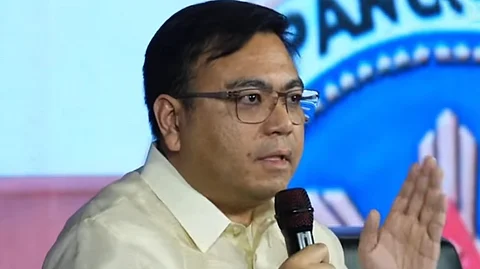
- NEWS
- the EDIT
- COMMENTARY
- BUSINESS
- LIFE
- SHOW
- ACTION
- GLOBAL GOALS
- SNAPS
- DYARYO TIRADA
- MORE

The Department of Human Settlements and Urban Development (DHSUD) has introduced new guidelines for the government’s flagship housing initiative — the Expanded Pambansang Pabahay para sa Pilipino (4PH) — aimed at streamlining the application process and widening the choices for Filipino homebuyers.
Under Department Order No. 2025-021, signed during the DHSUD’s weekly flag ceremony, the agency officially shifted the 4PH to a more beneficiary-centric program. The revised policy empowers homebuyers to choose from a range of government housing options — both horizontal and vertical — based on their personal needs, location preference and financial capability.
“In our new process, we have given homebuyers the freedom to choose the type of housing they want and where they want it,” DHSUD Secretary Jose Ramon Aliling said in Filipino.
“Their options are no longer limited; we’ve expanded them in response to the directive of President Marcos Jr.,” he added.
The new order eliminates the rigid and often complex procedures that previously hampered applications under 4PH. Instead, beneficiaries may now apply directly through their preferred developer — the Pag-IBIG Fund or the DHSUD itself.
“We simplified the application process,” Aliling said. “This gives homebuyers or beneficiaries more accessible pathways to government-supported housing.”
In a parallel move, the Pag-IBIG Fund issued a circular offering a subsidized interest rate of 3 percent for socialized housing loans under the Expanded 4PH.
This covers both vertical (condominium-type) and horizontal (subdivision-type) units for up to 10 years, with a possibility of even lower rates through government subsidies, subject to existing laws and budget provisions.
Aliling emphasized that these changes are part of DHSUD’s broader strategy to establish inclusive and sustainable housing communities through flexible financing and project options.
“Our aim is to make government housing more affordable, accessible, and conducive to dignified living,” he said. “We want buyers to take the lead in finding the right housing solution for them.”
The policy also sets mechanisms to align a buyer’s financial capacity with the eligibility criteria of funding institutions, ensuring a better fit between demand and available supply. It strengthens coordination among stakeholders — developers, national agencies, local governments, and financing institutions — to fast-track project implementation and improve delivery to end-users.
“These new guidelines transform the program into a people-centric, stakeholder-friendly platform with simplified processes not only for the beneficiaries but also for developers and our partner agencies,” Aliling noted.
“This follows President Marcos Jr.’s instruction to make service delivery easier, especially for the most in need. It is DHSUD’s direct response to calls for a more inclusive and expanded 4PH that can help more Filipino families achieve homeownership,” he said.
Since assuming office in May, Aliling has widened the scope of 4PH to include horizontal housing developments and other modalities such as rental housing and incremental housing plans. He also revived the community mortgage program, a financing option for informal settler families.
Originally focused on vertical developments, 4PH struggled to attract interest due to the higher cost of condominium-type units. Market data continues to show that many Filipinos prefer horizontal housing such as townhouses and subdivisions, which are now included under the restructured program.
